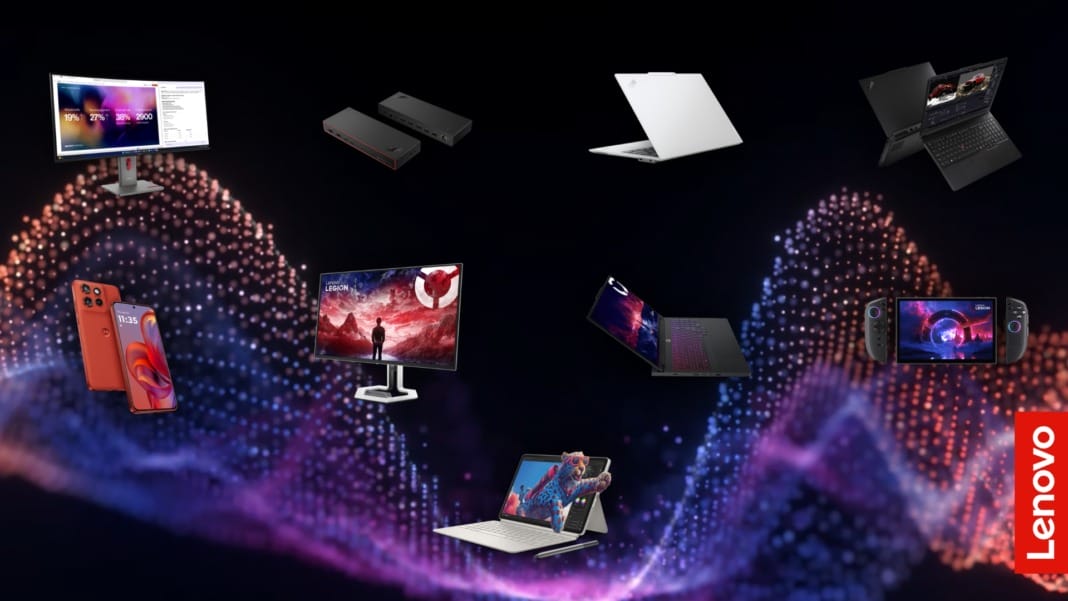Lenovo used its Innovation World 2025 showcase at IFA in Berlin on 5 September to introduce its widest range of AI-powered devices to date. The new portfolio covers PCs, tablets, gaming systems, and Motorola smartphones, underscoring the company’s vision of “Smarter AI for All”.
Luca Rossi, President of Lenovo’s Intelligent Devices Group, said the aim was to make AI an everyday reality. “From adaptive form factors and AI-ready workstations to handheld gaming, creator tablets, and moto ai-enabled smartphones, Lenovo is continuing to redefine what technology can do for people and businesses in the AI era. This isn’t about future potential, it’s about delivering real, everyday AI experiences now for hyper-personalisation, productivity, creativity, and data protection. All this is grounded in our belief that smarter technology, including smarter AI, should be accessible, useful, and empowering for all.”
For professionals, Lenovo highlighted several new concepts, including the ThinkBook VertiFlex, which has a rotatable 14-inch screen with an AI-adaptive interface, and the Lenovo Smart Motion Concept, a laptop stand with gesture control and health-focused ergonomics.
The company also refreshed its commercial workstations, adding the redesigned ThinkPad P16 Gen 3 alongside updated P1 Gen 8, P16v Gen 3, P16s i Gen 4, and P14s i Gen 6. These are designed for power users working with AI development and high-performance creative workflows. Lenovo also added a Glacier White option for its ThinkPad X9 Aura Edition, available in 14- and 15-inch sizes.
On the display side, Lenovo launched the ThinkVision P40WD-40, a 39.7-inch curved ultrawide monitor with 5120×2160 resolution and Thunderbolt 4 one-cable docking. It also introduced a refreshed ThinkPad Smart Dock range, including the Thunderbolt 5 Smart Dock 7500, which supports up to four high-refresh displays.
To accelerate AI adoption in sectors such as publishing, healthcare, and finance, Lenovo is piloting on-device AI assistants through its AI Fast Start services programme, powered by Intel’s AI Assistant Builder.
New devices for consumers
For gamers, Lenovo announced an expanded Legion portfolio. The headline launch was the Legion Go handheld gaming PC with an 8.8-inch OLED display, upgraded TrueStrike controllers, and longer battery life. It also introduced the Legion Pro 7 (16-inch), the LOQ Tower 26ADR10, and three new Legion Pro OLED monitors offering high refresh rates and PureSight visuals.
A free software update will soon enable 3D mode on Legion Glasses Gen 2, supporting immersive play across more than 20 titles on Legion Go and selected laptops.
For creators and casual users, Lenovo unveiled FlickLift, an AI-powered editing overlay for Yoga and IdeaPad devices that can remove backgrounds, sharpen subjects, and simplify cross-app image editing.
The new Yoga Tab, aimed at creative professionals, features a 3.2K PureSight Pro display, hybrid AI functions, and compatibility with the Lenovo Tab Pen Pro for sketch-to-image input. Alongside it, the Idea Tab Plus offers AI tools such as Smart Notes, Circle to Search, and Gemini integration in a lightweight, colourful design.
Motorola brings AI to smartphones
Motorola, part of Lenovo, introduced three new smartphones. The flagship is the motorola edge 60 neo, a compact model featuring the company’s moto ai suite for enhanced photography, productivity, and usability. It is equipped with a Sony LYTIA sensor, a telephoto lens, and a triple camera system.
In the value tier, Motorola launched the moto g06 and moto g06 power. Both offer 6.88-inch displays, AI-driven 50MP cameras, Dolby Atmos audio, and Circle to Search with Google. The g06 power features a 7000mAh battery capable of lasting up to 2.5 days on a single charge. Both devices support up to 12GB RAM with RAM Boost and 256GB of storage.
Company outlook
Lenovo, which reported annual revenue of US$69 billion, remains the world’s largest PC company and is ranked 196th on the Fortune Global 500. With customers in 180 markets, the company continues to expand its portfolio of AI-ready hardware and services across PCs, smartphones, infrastructure, and software.





